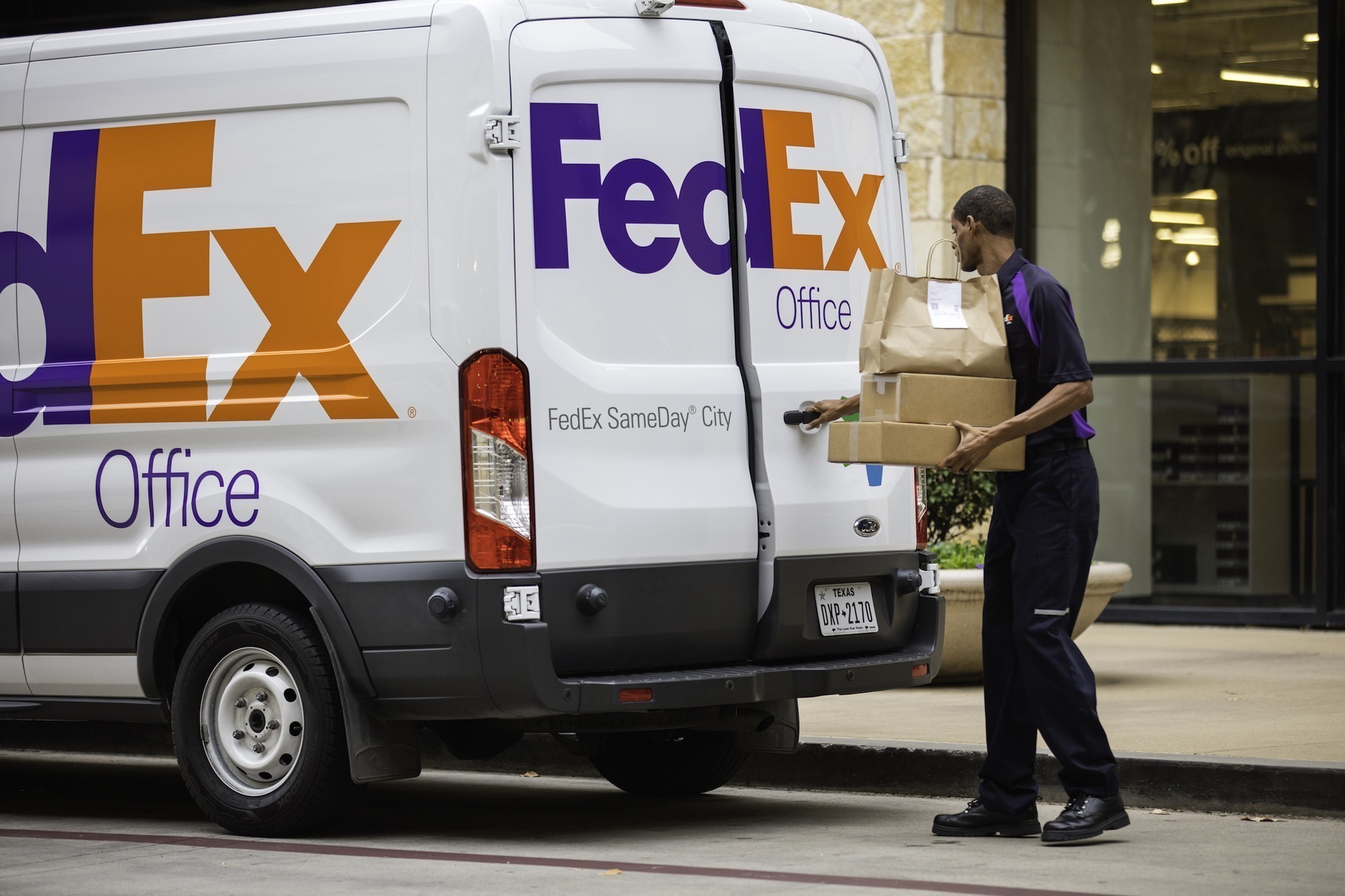Don’t want to fulfill and ship out orders yourself, but instead use a third-party vendor? Here’s a dropshipping 101 lesson for you.
Dropshipping is a fulfillment method that allows you to work with a third-party provider to ship out orders. You purchase items from a vendor who then sends the product directly to your customer. In essence, you don’t have to keep or manage products in stock yourself.
Getting help with fulfilling orders sounds like a good idea, and maybe could even save you money and hassle.
However, is that always the case? Does it make sense for what you sell?
Let’s run through a quick dropshipping 101 course, including the pros and cons as a merchant. But first, here’s a dropshipping overview.
What is Dropshipping and how does it work?
Consider this scenario. You live and run your eCommerce business in rural Iowa selling novelty coffee mugs.
You have a few options for fulfillment:
- Keep all your inventory on hand and ship out orders yourself
- Manage a warehouse, build out processes and hire staff to ship orders
- Work with a supplier in Nevada who ships directly to your customers
Option number 3 is an order fulfillment method called dropshipping.
This is how it works. First, you receive an order from a loyal customer in California. From there, you notify your supplier (or, in other cases, a wholesaler or manufacturer) about said order.
Next, your supplier packs up and ships the item to your customer from their Nevada warehouse. And lastly, it arrives on their doorstep more quickly and cost-effectively than it would have if you shipped it from Iowa.
In this situation, dropshipping benefits everyone. Your customer gets the item ASAP and at a low shipping cost. Your supplier makes a sale. And you get to serve a satisfied customer without ever having to touch, store, pack or ship the product.
Sound good? It definitely can be, especially if you don’t have time or the warehouse space to house and fulfill your orders.
However, like all things, dropshipping has its own list of pros and cons.
Dropshipping 101: Pros of Dropshipping in your eCommerce Business
So what are some of the benefits of dropshipping, if you’re still on the fence about it? Let’s stick with the coffee mug example above as we walk through some of these.
Less Time and Hassle Spent on Storage and Fulfillment
When you partner up with a dropshipper, you don’t have to store products in your own warehouse. Meaning, you don’t have to stare at that pile of Christmas-themed mugs year round. Dropshipping saves you money on storage fees and also gives you freedom to focus on other things, instead of spending time shipping products.
Save Money on Delivery Costs and Get Your Items to Customers Faster
This is a big one. Take U.S.-based sellers as an example. If you live and run your operations on the East Coast, it’s going to take longer for your items to ship to the West Coast because sadly, we haven’t figured out a way to beat the laws of physics yet. But dropshipping from a Midwestern or West Coast location can mean your items get to your customers more speedily, and you pay less to ship the items to their final destination.
Test New Products
Dropshipping is also a great way to test out new products. Say you think novelty thermoses might sell right alongside your coffee mugs. But you don’t want to risk ordering your supplier’s 5000 quantity minimum and getting stuck with inventory if they flop. Instead, you can easily test out this new product, and if your customers aren’t interested, your bottom line is safe.
Ship Large Quantity Orders
Another scenario where dropshipping might come in handy is when your customer orders in bulk. If you only carry 50 of a certain SKU, but your customer wants 100, then dropshipping some or all of the items from your supplier can save the day. This is much better than having to tell a customer that you can’t fulfill their entire order (and risk them turning elsewhere).
Avoid International Fees
Do a lot of cross-border business? It could be beneficial to dropship from within another country (or multiple countries) where your international sales are taking off. For example, say you are based in the US but your products are all the rage in France. If you dropship from a supplier in the EU, you’ll save on duties and the customer can get faster shipping.
Time, money, and energy are the main things you could save with dropshipping. If shipping is a huge hassle to you and you’d rather delegate this task, it’s certainly something to consider.
However, let’s take a look at the other side of dropshipping. What are some risks to this fulfillment strategy?
Dropshipping 101: Cons of Dropshipping in your eCommerce Business
In eCommerce, merchants live and die by figures. And dropshipping can still cut into those margins, which hurts if they’re slim already. Here are five reasons why dropshipping just may not be the best option for you.
Cost
After you’ve paid your dropshipper to fulfill your order for you, it’s possible that your profit margin will be smaller. Plus, a lot of other online sellers have flocked to the dropshipping business model, so you need to be strategic and find a profitable niche.
Administrative Hassles
Dropshipping might seem hands-off (and with ShipperHQ, the rate functionality can be), but there’s still plenty to do. You have to build your brand, work with your dropship distributor, and handle returns, exchanges and customer service. On top that, you may be on the hook to collect sales tax in states where the orders are being fulfilled, causing you extra compliance work.
Quality Control
When you receive an order, pack up the item, and ship it yourself, you can oversee the entire process. With dropshipping, this goes out the window. Not that your dropshipper won’t do a good job, but when they make a mistake, the customer will see you as the at-fault party. So make sure you chose a reliable distributor.
Brand Management
As an online store, packaging is one way you get to engage with your customer. This is your opportunity to include a cute handwritten “Packed by” sticker or other marketing collateral to delight your customer. For example, Jeni’s Splendid Ice Creams packs their ice cream in signature orange boxes and I’m sure their customers’ mouths start watering as soon as they see that tell-tale packaging. However, with dropshipping, unless you pay extra (which will cut further into your margins), you lose this chance for a memorable customer interaction.
Handling Returns and Exchanges
Estimates vary, but somewhere between 15% to 40% of all items purchased online are returned. If you’re dropshipping, where does that item go? To you? Back to the warehouse? You’re still responsible for working with the customer, and again, if there’s an issue with the return you can’t control, this hurts your reputation.
Technology Makes Dropshipping Simpler than Ever
So you’ve gone through the pros and cons and decided “Yes, this is for me!”
Now what? Well, you can work with an order management system (OMS) to track sales, orders, inventory and fulfillment. However, one aspect you’ll probably need help figuring out is how much to charge customers for shipping from these dropshippers.
Thankfully, this is something you don’t have to determine yourself. Instead, you can automate with shipping rate management software like ShipperHQ.
ShipperHQ’s Multi-Origin Shipping feature enables you to easily list your dropshippers as ship-from origin points. From there, ShipperHQ allows you to set up intelligent rules for when you want to use your dropshipper and when you’d rather fulfill from your own warehouse, store, or another location.
In cases where you only want to dropship in certain situations, such as when your supplier is significantly closer to your customer, or when your customer orders in bulk, ShipperHQ automates this entire process.
Dropshipping 101 Conclusion
Hopefully, this article was a great dropshipping 101 lesson if you’re in the process of deciding your fulfillment strategy.
Dropshipping is a viable option for some companies, whether you rely entirely on it, or use in case of contingencies. Like anything when it comes to eCommerce, it’s best to consider your options before jumping into it headfirst.
Already a dropshipper? Consider using ShipperHQ to power your checkout’s shipping rates and options. On top of managing rates from multiple shipping locations, we can help you enable shipping rules and restrictions for your products, calculate dimensional shipping and offer live LTL freight rates (plus much more).
Sign up for a 15-day free trial of ShipperHQ today and take command of your shipping – dropshipping or otherwise!






